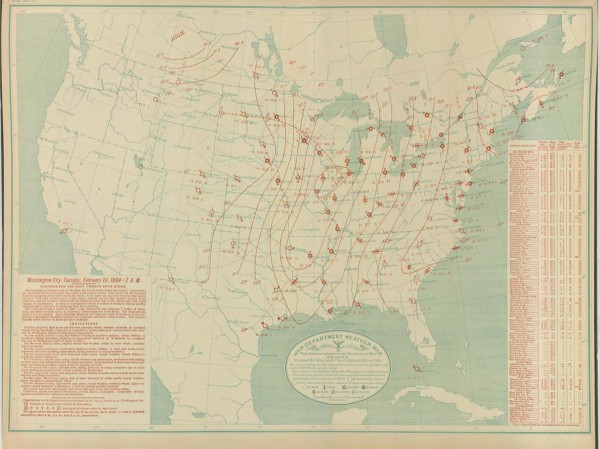Tornado Outbreak Is An Enigma
The U.S. Army Signal Corps was in charge of collecting weather observations and producing storm warnings in 1884. The weather map from the morning of Tuesday, February 19th that year showed low pressure over northern Illinois. Temperatures over the lower Mississippi Valley were in the 60s that morning. From North Alabama into North Carolina, temperatures were in the 40s and 50s.
Official weather forecasts for the Gulf States called for “local rains” with winds shifting from southerly to westerly and then northerly. For the South Atlantic, “slightly warmer fair weather” was called for, with winds shifting to westerly and a generally lower barometer. There was no indication of what the day would portend.
The first tornadoes of the day touched down in Mississippi during the late morning, near Louisville and Columbus, passing into Alabama north of Carrollton. A deadly tornado touched down near Oxmoor at 1:20 p.m. This tornado roared northeast toward the new industrial town of Leeds, southeast of Birmingham. The tornado was deadliest there, killing thirteen people and sweeping away many homes. It would stay on the ground to the southeast of Branchville.
About 2:30 p.m., what was likely an F4 tornado roared from the sky near Jacksonville in East Alabama. This would be the deadliest tornado of a very deadly day. Ten people were killed at Germania (now Piedmont). Fourteen people died at Goshen. The school at Goshen was “blown to atoms” killing the schoolmaster and injuring many of the children. The tornado killed thirty people along its thirty five mile path into Georgia.
Georgia was especially hard hit. In fact, the day is still Georgia’s deadliest tornado disaster, with at least 69 fatalities from at least seventeen significant tornadoes.
The rampage would continue into the Carolinas during the late afternoon and evening hours. One of the deadliest tornadoes of the outbreak killed at least fifteen people around the community of Philadelphia, North Carolina.
The outbreak is known as the “Enigma Outbreak”, so called because the true death toll is an enigma. Because the storms struck mainly across the rural South, newspaper reports and records are scarce. Official Signal Corps record indicated 182 fatalities. When Tom Grazulis’ Tornado Project researched the event, they set the final death toll at 178. Over the years, estimates have ranged as high as 2,000, since it is believed that many of the fatalities who were poor African-Americans were not counted in the rural South. The number of tornadoes is also uncertain, but Grazulis counted at least thirty seven “significant,” F2 or higher rated tornadoes.
Category: Met 101/Weather History



















